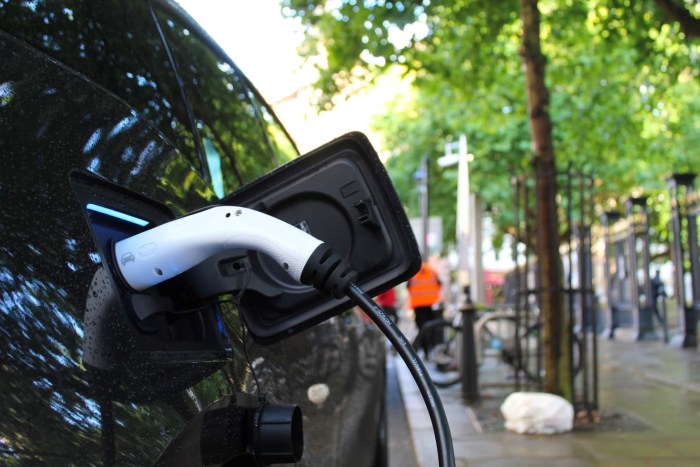The bioenergy sector is growing rapidly, and it’s widely seen as a key solution to the global challenge of climate change. It has great potential to reduce greenhouse gas emissions while also providing energy security through renewable sources. However, a lack of IT can be an obstacle to further developments in this sector. That’s because IT is essential to accessing real-time data that helps make more informed decisions about production and distribution processes for bioenergy products, including biogas and ethanol.
If you’re in the bioenergy sector, you’re going to find that having robust IT systems set up for you by professionals is going to do most of the heavy lifting for you. To browse what this set up may entail, you can head over to https://tenecom.com/ where they go in much more detail.
In this article, the focus will be on the specific role that IT plays in the bioenergy sector:
1. Gives Access To Real-Time Data
In an industry as dynamic and rapidly changing as bioenergy, it’s important to have access to real-time data. Real time data allows stakeholders to always have their eyes on their plants and monitor close growths, threats and changes as they come.
A farmer may want a system that allows them to monitor their crop growth rate over time by using satellite imagery of their land; this type is called ‘remote sensing.’ This would help them determine when they need more fertilizer or irrigation water, so they don’t waste money on things that aren’t necessary at certain times (or too much of either). They could also use remote sensing technology on their crops during specific seasons when pests tend to attack certain plants and then use this information along with other sources like weather forecasts.
2. Improved Decision-Making Capabilities
In the bioenergy sector, information technology can be used to make better decisions. It can help you to make them faster and with more accuracy.
For example, a company that has its own fleet of trucks may want to use an application on a tablet-style device to monitor the location of its drivers at any given moment. With this technology in place, they could see when one of their drivers is running late or if they arrive at work before they’re supposed to (or not). This would allow them to make adjustments as necessary because they’ll have access to accurate information about what’s happening on the road at the moment.
3. Improved Processes
Bioenergy is becoming a more important part of the energy industry, but it’s still in its early stages. As the bioenergy sector grows, so will the need for IT professionals who can help manage and improve processes.
The creation of bioenergy requires a lot of complicated processes that must be monitored and managed to ensure efficiency. For example, if a company wants to build an ethanol plant from scratch, it must make sure that each step in its manufacturing process works as intended—from growing plants to distilling alcohol out of them on an industrial scale—and that nothing goes wrong along the way. If anything goes wrong (and it often does), then there will be delays or even complete stoppage until repairs are made or new equipment is installed.
With modern technology at their disposal via IT solutions such as data analytics software or sensor networks, companies can make sure that everything runs smoothly before something bad happens, and they lose valuable time trying to fix problems after-the-fact rather than preventing them beforehand. This can be done through better planning beforehand with proper data collection methods such as sensors placed all over production facilities throughout entire supply chains.
4. Increased Operational Efficiencies
As more and more businesses turn to IT, it’s becoming clear that technology is critical for improving efficiencies across the board. In the bioenergy sector, there are many ways that IT has improved operations:
- Reduced Cost of Operations: Improved communication means less time between management and employees, which means reduced labor costs. Additionally, better data management allows you to make smarter decisions about your business plan moving forward. This might involve reducing inventory or cutting back on energy consumption in order to save money on capital expenditure (CAPEX).
- Reduced Time To Market: By implementing automation tools like artificial intelligence (AI), big data analytics can now accelerate product development cycles by providing insights into what customers want before they even know they want them. AI also improves operational efficiency by helping you reduce waste by predicting when certain products will go bad so they can be replaced before expiration dates arrive—all while increasing overall operational efficiency at every step along this process through automation tools like AI, which provide insights into what customers want before even knowing themselves.
5. Improved Control Of Biogas Processes And Automation
Automation provides better control of the biogas process and helps to avoid human error. This results in more reliable and consistent production, as well as reduced costs, increased safety, and improved efficiency and productivity.
An automated control system may also include an alarm system that alerts operators of any issues or problems with the process taking place. The information provided by this system can help operators troubleshoot issues quickly and efficiently so that they do not have to wait too long before remedying them. In addition to saving time, this can also prevent delays that might cause customers who rely on your service to go elsewhere for their needs (especially if you’re providing bioenergy).
Conclusion
We’ve covered a lot of ground in this article, but there is still more to explore. IT in the bioenergy sector has the potential to make a significant impact on our environment and our lives. The integration of new data, automation, and communication systems will be key to success. But as we’ve seen with solar panels, wind turbines, and other renewable energy endeavors—the benefits are worth it!


























